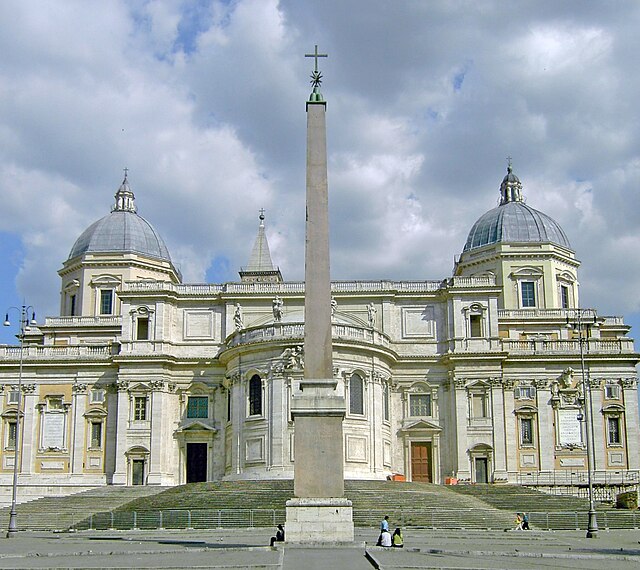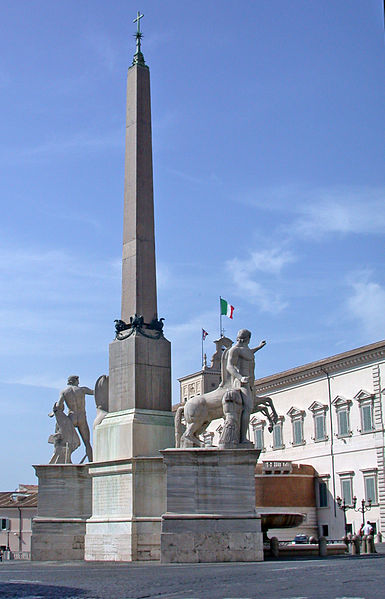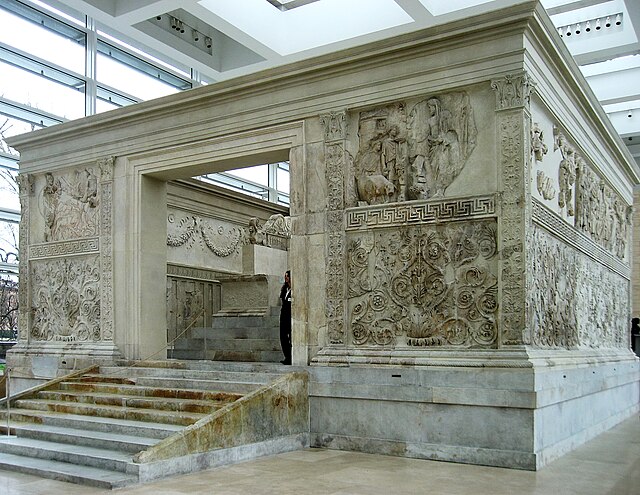The Mausoleum of Augustus is a large tomb built by the Roman Emperor Augustus in 28 BC on the Campus Martius in Rome, Italy. The mausoleum is located on the Piazza Augusto Imperatore, near the corner with Via di Ripetta as it runs along the Tiber. The grounds cover an area equivalent to a few city blocks nestled between the church of San Carlo al Corso and the Museum of the Ara Pacis. After being closed for fourteen years to perform restoration work, the mausoleum was reopened to the public in March 2021.
Mausoleum of Augustus restored (2019)
Esquiline obelisk, originally on the western flank of the mausoleum. Found in 1527 and removed in 1587 to Santa Maria Maggiore by Pope Sixtus V.
The Mausoleum of Augustus in the 1st century, an 1851 reconstruction.
Quirinale obelisk, originally on the eastern flank of the mausoleum. Found in 1527 and removed in 1786 to the Quirinal Hill by Pope Pius VI.
The Campus Martius was a publicly owned area of ancient Rome about 2 square kilometres in extent. In the Middle Ages, it was the most populous area of Rome. The IV rione of Rome, Campo Marzio, which covers a smaller section of the original area, bears the same name.
Model of the ancient Campus Martius, seen near the lower left of the picture, around AD 300. When the Assembly of the Centuries used to vote on the Field of Mars in the Roman Old Republic, it had been an area outside the Pomerium, the exact boundaries of which have not been preserved. By this time, however, it was a perfectly rectangular field, surrounded by buildings very much inside the city proper.
The Pantheon and the Fontana del Pantheon, a landmark of the Campus Martius since ancient Rome
Ara Pacis Augustae, the "Altar of Augustan Peace", as reassembled
View of the opposite side Tellus Panel at the left and Roma Panel at the right








